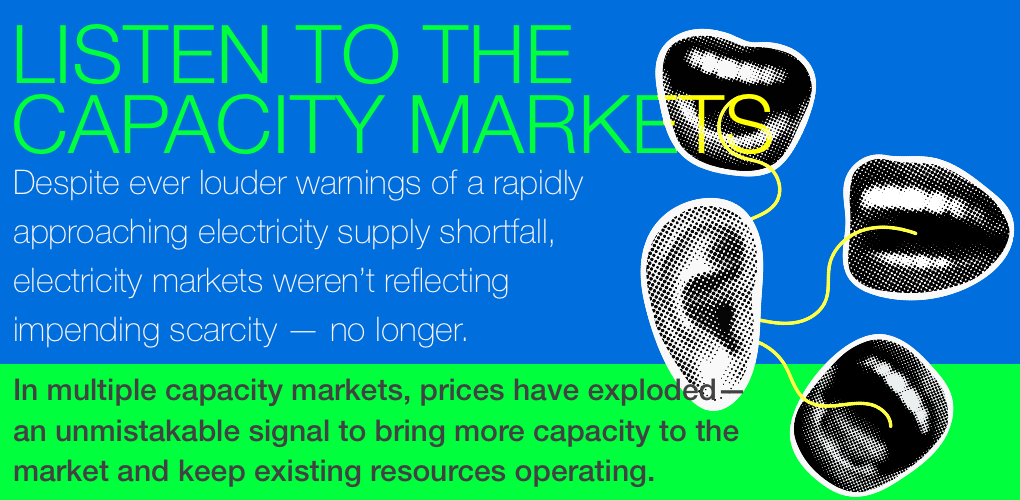
Listen to the Capacity Markets
For years, despite ever louder warnings of a rapidly approaching electricity supply shortfall, electricity markets weren’t reflecting impending scarcity. No longer.
In both the PJM and Midcontinent Independent System Operator (MISO) capacity markets, prices have exploded—an unmistakable signal to bring more capacity to the market and keep existing resources operating.
Last year, capacity payments to generators in PJM, a sort of insurance premium to assure plants are available when needed, jumped a remarkable 800% as rising power demand threatened to overtake diminishing supplies. Nearly the same thing just happened in MISO, which operates the grid and market stretching across 15 states from Louisiana up through Minnesota and into the Canadian province of Manitoba.
Capacity prices for the upcoming summer season jumped to $666.50 per megawatt-day up from $30 last year—a more than 2,100% increase. Declining surplus capacity in an already tight market is driving the jump.
Surplus capacity fell to about 2.6 gigawatts (GW), down from 4.6 GW last year. “The results reinforce the need to increase capacity, as demand is expected to grow with new large load additions,” MISO said.
Homing in on Reliability
For the first time, MISO used a new reliability-focused pricing structure that attempts to more accurately reflect the increasing value of accredited capacity as the system’s reserve margins become perilously thin. Accredited values are assigned to resources based on their ability to meet system reliability needs during peak periods of demand, a far different metric than nameplate capacity which refers to how much power a resource can provide during ideal conditions.
As MISO – and other grid operators – fine tune their accredited capacity values, the value of existing coal capacity is going up while renewable accredited values are generally declining. Grid operators are trying to manage a new risk calculation brought on by ever-larger reliance on intermittent sources of power—a risk underscored by the recent blackouts that hit Portugal, Spain and parts of France.
While adjusting markets and accreditation values is wonky stuff, there is a bottom line emerging: leaning on intermittent power to solve the power shortfall crisis isn’t going to get the job done. And reliable, dispatchable power already on the grid is more important than ever. To put a finer point on it, coal power is more important than ever and coal demand is up.
With a doubling of natural gas prices in a year, coal generation is already taking market share in MISO, helping shield consumers from rising prices. According to Argus, coal generation jumped 31% from the year prior. April was the fifth consecutive month that coal power in MISO was higher than it had been a year earlier.
Dispatchable fuel diversity doesn’t just underpin reliability, it’s a commodity price shock absorber that protects consumers.
Markets are beginning to play from the exact same sheet of music as grid operators and the nation’s reliability regulators. The nation’s supply of power is in trouble. It’s past time we all listen.
- On May 7, 2025
